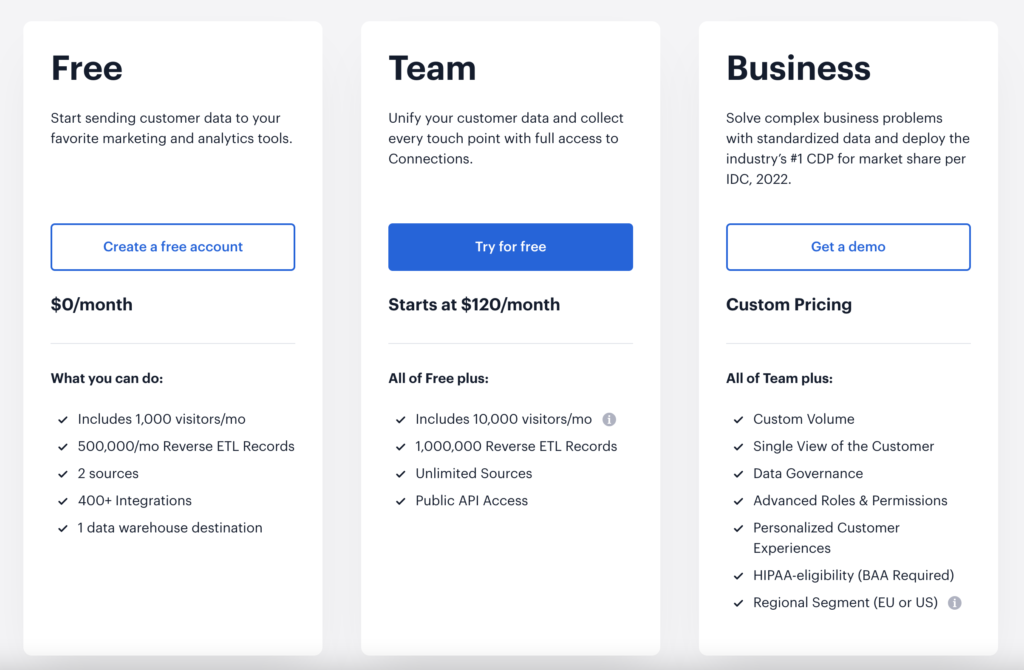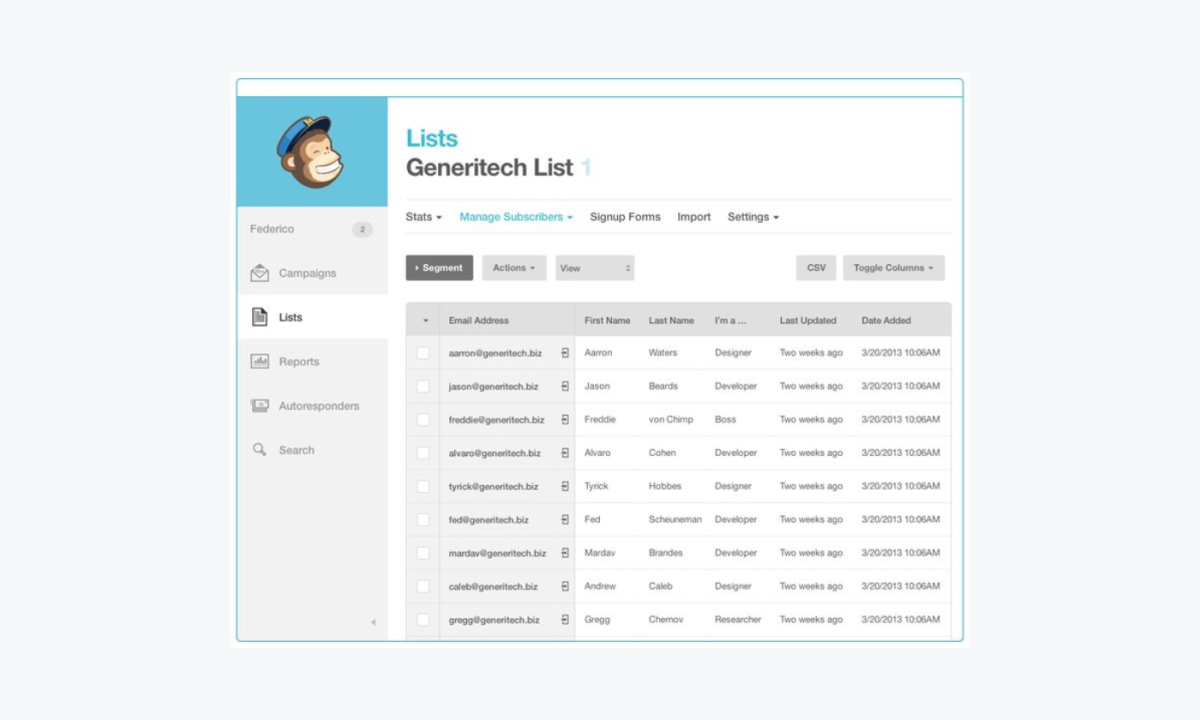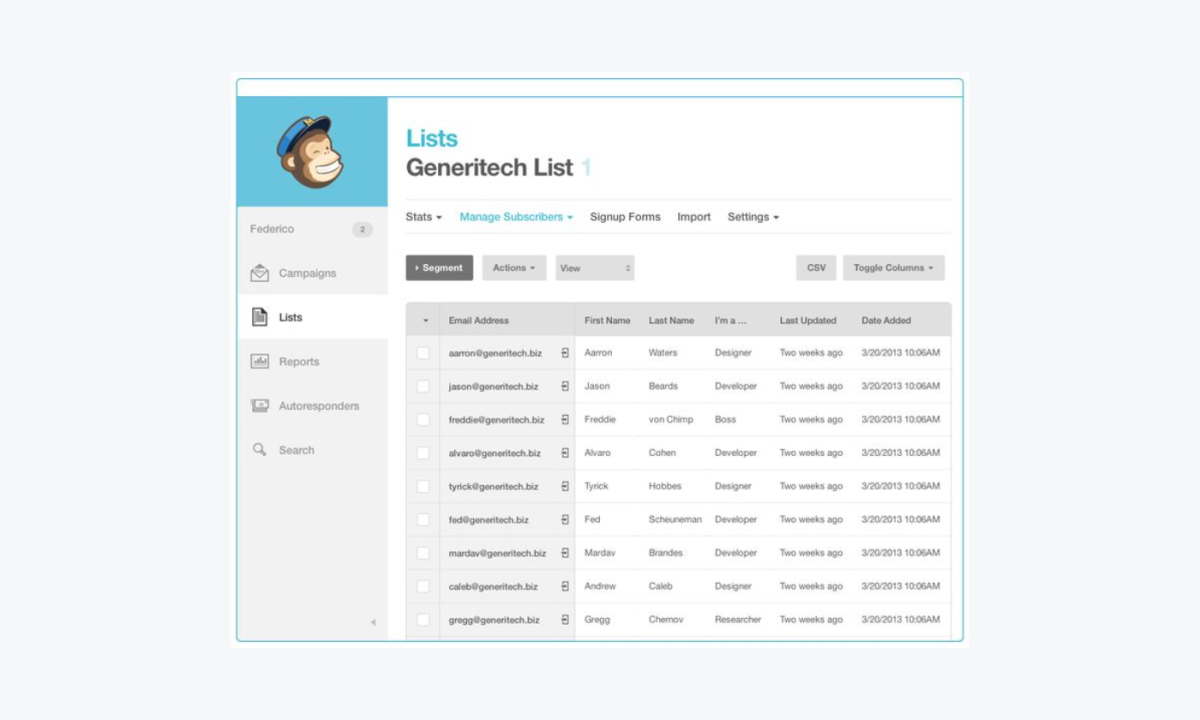Customer segmentation software empowers businesses to understand their customers better than ever before. This insightful analysis delves into the intricacies of this powerful tool, exploring its core functionalities, benefits, and practical applications. From enhancing marketing campaigns to driving revenue growth, the software offers a robust framework for optimizing customer relationships and achieving business success.
The software offers a structured approach to categorize customers based on various characteristics, enabling businesses to tailor their strategies and communications. This, in turn, fosters stronger customer connections and increases the effectiveness of marketing efforts. A deep dive into customer segmentation software reveals how it facilitates a data-driven strategy, ultimately benefiting the business in numerous ways.
Introduction to Customer Segmentation Software
Customer segmentation software is a powerful tool designed to categorize customers based on shared characteristics. This enables businesses to tailor marketing strategies, product development, and customer service interactions to specific groups, leading to improved customer satisfaction and increased revenue. It leverages data analysis and sophisticated algorithms to identify patterns and relationships within customer data, providing a deeper understanding of diverse customer needs.This software provides a structured framework for understanding customer behavior and preferences.
It automates the complex process of segmenting customer data, freeing up valuable time and resources for marketing and sales teams to focus on strategic initiatives. This detailed understanding fosters targeted marketing campaigns and personalized customer experiences.
Core Functionalities
Customer segmentation software offers a range of functionalities to support effective customer segmentation. These tools enable businesses to identify and analyze key characteristics of their customer base. This includes collecting, cleaning, and integrating data from various sources, such as CRM systems, marketing automation platforms, and sales records. Data preprocessing and transformation ensure the accuracy and reliability of the segmentation results.
Sophisticated algorithms and models analyze this data to derive meaningful segments. This automated process reduces manual effort and enhances the efficiency of the segmentation process. The software further provides insightful reporting and visualization tools to present the results of the segmentation analysis in an accessible format, enabling data-driven decision-making.
Customer Segmentation Techniques
This software supports a variety of customer segmentation techniques. These techniques are often combined to gain a comprehensive view of customers. RFM (Recency, Frequency, Monetary value) analysis is a common technique that categorizes customers based on their recent purchases, purchase frequency, and total spending. Demographic segmentation focuses on observable characteristics such as age, gender, location, and income.
Behavioral segmentation categorizes customers based on their interactions with the product or service, such as browsing history, purchase patterns, and engagement with marketing materials. Psychographic segmentation delves into customers’ values, attitudes, and lifestyles to understand their motivations and needs.
Industries Utilizing Customer Segmentation Software
Numerous industries benefit from using customer segmentation software. Retailers leverage this software to personalize product recommendations and targeted promotions. Financial institutions utilize it to identify high-value customers and tailor financial products. E-commerce companies utilize it to optimize their online marketing strategies and personalize the customer journey. Telecommunication companies leverage it to improve customer service and retention.
These are just a few examples of the diverse applications of customer segmentation software across various sectors.
Key Features of Customer Segmentation Software Solutions
| Feature | Description | Example | Importance |
|---|---|---|---|
| Data Integration | The ability to seamlessly pull and combine data from multiple sources. | Connects to CRM, marketing automation, and sales data. | Critical for a comprehensive understanding of the customer. |
| Segmentation Models | A range of segmentation algorithms and approaches available. | RFM, demographics, behavioral, psychographic. | Impacts the accuracy and detail of the segments created. |
| Reporting & Visualization | The presentation of segmentation insights in an easily understandable format. | Interactive dashboards, charts, and reports. | Essential for making data-driven decisions. |
Benefits of Using Customer Segmentation Software
Customer segmentation software is no longer a luxury, but a necessity for businesses aiming to thrive in today’s competitive market. It provides a structured approach to understanding customer needs and preferences, enabling businesses to tailor their offerings and marketing strategies to resonate with specific customer groups. This, in turn, leads to increased customer satisfaction, loyalty, and ultimately, revenue.Businesses can leverage this data-driven insight to optimize their operations and create highly targeted marketing campaigns, ultimately maximizing their return on investment.
This approach allows for a deeper understanding of customers, facilitating personalized interactions and fostering stronger customer relationships.
Enhanced Business Strategies
Customer segmentation software provides a robust foundation for developing targeted business strategies. By identifying distinct customer segments, businesses can tailor their products, services, and marketing messages to meet the specific needs and desires of each group. This approach enables a more precise allocation of resources, leading to a higher return on investment. For example, a company selling apparel might create different marketing campaigns targeting young professionals, families, or athletes, based on their unique preferences and needs.
Improved Customer Relationships
By understanding the specific needs of different customer segments, businesses can personalize their interactions and foster stronger relationships. Tailored communication and personalized offers demonstrate a deep understanding of customer preferences, strengthening trust and loyalty. This personalized approach creates a more positive and engaging customer experience, leading to increased customer satisfaction and retention. For instance, a bank could offer specialized financial products and services to high-net-worth individuals, demonstrating a commitment to their unique needs.
Impact on Marketing Campaigns
Customer segmentation software allows for the development of highly targeted marketing campaigns. By identifying specific customer segments, businesses can tailor their messaging and channel selection to resonate most effectively with each group. This approach leads to higher conversion rates and improved campaign performance. A cosmetics company, for example, might utilize social media to target young women, while employing email marketing to reach a more mature customer base.
Increased Revenue Potential
By effectively segmenting customers, businesses can optimize their pricing strategies, product development, and marketing efforts. This leads to increased sales, customer lifetime value, and ultimately, greater revenue generation. For example, an e-commerce company might offer exclusive discounts to loyal customers, encouraging repeat purchases and driving revenue growth.
Comparison of Manual and Software-Based Segmentation
| Aspect | Manual Segmentation | Software-Based Segmentation |
|---|---|---|
| Speed | Time-consuming and laborious | Rapid and automated |
| Accuracy | Prone to human error | Data-driven and objective |
| Scalability | Difficult to scale with growing customer base | Easily scales with increasing data volumes |
Key Features and Capabilities
Effective customer segmentation software empowers businesses to understand their customers deeply, enabling targeted marketing strategies and personalized experiences. It goes beyond simple demographic data to uncover nuanced insights about customer behavior, preferences, and needs. This understanding drives improved customer relationships, increased sales, and enhanced profitability.The core functionality of this software lies in its ability to analyze diverse data sources and apply advanced analytical techniques to create meaningful customer segments.
Data analysis tools are crucial in this process, enabling businesses to identify patterns, trends, and anomalies within the data, ultimately leading to actionable insights.
Essential Features of Effective Customer Segmentation Software
Customer segmentation software must offer robust data integration capabilities to consolidate data from various sources. Data validation and cleansing are essential to ensure accuracy and reliability of the insights generated. A user-friendly interface is vital for intuitive navigation and ease of use. The software should provide clear visualizations of the segmented customer groups, allowing for a quick understanding of the key characteristics of each segment.
Data Analysis Tools
Data analysis tools are the engine driving customer segmentation software. Sophisticated algorithms are crucial for identifying patterns and correlations within large datasets. These tools should include options for statistical analysis, predictive modeling, and machine learning techniques. Statistical analysis, for instance, helps in understanding the significance of relationships between variables. Predictive modeling assists in forecasting future customer behavior, while machine learning techniques are capable of uncovering complex patterns and insights within the data.
Data Sources
The ability to ingest data from diverse sources is a key aspect of effective customer segmentation software. These sources can include transactional data (purchase history, order details), customer relationship management (CRM) data, website analytics (browsing behavior, product views), social media interactions, and survey responses. Integrating these disparate data sources allows for a comprehensive view of the customer, revealing a richer understanding of their preferences and needs.
Advanced Analytics and Machine Learning Capabilities
Advanced analytics and machine learning capabilities are crucial for uncovering hidden patterns and insights from the data. Techniques like cluster analysis and association rule mining can reveal underlying customer segments and relationships between products or services. For example, a retail company might use these techniques to identify customers who frequently purchase specific product combinations, allowing for targeted promotions.
Sophisticated machine learning algorithms can also be used to predict customer churn, enabling proactive measures to retain valuable customers.
Must-Have Capabilities
- Data Integration: The ability to seamlessly integrate data from various sources (CRM, marketing automation, e-commerce platforms, etc.) is crucial for a comprehensive view of the customer.
- Data Analysis Tools: Advanced statistical analysis, predictive modeling, and machine learning algorithms are essential for uncovering patterns and insights within the data.
- Visualizations: Clear and intuitive visualizations of customer segments, allowing for easy interpretation and understanding of the key characteristics of each segment.
- Customizable Segmentation: The ability to create and manage custom segments based on specific business needs and objectives. For example, a company might want to segment customers based on their lifetime value, purchase history, or website engagement.
- Reporting and Dashboards: Comprehensive reporting capabilities and interactive dashboards for monitoring key metrics and tracking the performance of segmentation strategies.
Methods of Segmenting Customers
The table below Artikels some common methods used in customer segmentation:
| Method | Description | Example |
|---|---|---|
| RFM Analysis | Based on Recency, Frequency, and Monetary value. | Customers who purchased recently, frequently, and spent significantly. |
| Behavioral Segmentation | Based on customer behaviors and purchasing patterns. | Customers who browse specific product categories or use specific features. |
| Demographic Segmentation | Based on observable, measurable characteristics of a customer. | Customers who fall within a specific age group, income bracket, or geographic location. |
| Psychographic Segmentation | Based on customer’s lifestyle, values, interests, and personality traits. | Customers who are environmentally conscious, health-focused, or value experiences over material possessions. |
Implementation and Integration

Integrating customer segmentation software into your existing infrastructure is a crucial step. Careful planning and execution ensure a seamless transition and maximize the software’s potential for business growth. Proper implementation avoids disruptions and allows your team to leverage the segmentation insights effectively.The process typically involves a series of steps, from data preparation to configuration and ongoing maintenance. A well-defined strategy ensures that the software aligns with your business objectives and integrates seamlessly with your existing tools.
Integration Process
The successful integration of customer segmentation software hinges on a methodical approach. This involves connecting the software to your current data sources, such as CRM systems, marketing automation platforms, and sales databases. A crucial step is ensuring data compatibility and accuracy to generate reliable segments.
Data Preparation and Cleansing
Accurate data is fundamental to effective customer segmentation. Before implementing the software, it is essential to cleanse and prepare your data. This involves identifying and correcting inconsistencies, handling missing values, and ensuring data integrity. This step is vital to achieving reliable and actionable customer insights. Data quality directly impacts the accuracy of segmentations and the effectiveness of subsequent marketing campaigns.
Poor data quality can lead to inaccurate segmentations and ineffective marketing strategies.
Setup and Configuration
The software’s setup and configuration are essential for its proper functioning. This process usually involves mapping data fields, defining segment criteria, and configuring reporting parameters. Proper setup enables the software to generate accurate and insightful customer segments. This process should be handled with precision and attention to detail to ensure accuracy and avoid errors.
Step-by-Step Implementation Guide
- Assessment: Evaluate your existing data sources and identify areas for improvement.
- Data Preparation: Cleanse and prepare your data to ensure accuracy and consistency.
- Software Selection: Choose the software that best aligns with your business needs and objectives.
- Integration: Connect the software to your existing systems and data sources.
- Configuration: Define segment criteria and configure reporting parameters.
- Testing: Thoroughly test the software and segments to ensure accuracy.
- Deployment: Roll out the software to your team and implement the segmentation strategy.
- Monitoring and Evaluation: Continuously monitor the software’s performance and evaluate its impact on business outcomes.
Common Integrations
Effective integration with existing systems is key to the success of customer segmentation software. This ensures that data flows seamlessly between different platforms.
| Software | Common Integrations |
|---|---|
| CRM Systems | Salesforce, HubSpot, Zoho CRM |
| Marketing Automation Tools | Marketo, Pardot, HubSpot |
| eCommerce Platforms | Shopify, Magento, WooCommerce |
| Data Warehouses | Snowflake, Amazon Redshift, Google BigQuery |
Case Studies and Examples

Customer segmentation software is not just a theoretical concept; it’s a powerful tool with demonstrable results in the real world. Companies across various industries have leveraged these systems to refine their marketing strategies, personalize customer interactions, and ultimately boost their bottom lines. Examining successful implementations provides valuable insights into the practical applications and impact of this technology.These examples showcase how businesses are using customer segmentation software to understand their customer base better, leading to more effective and targeted strategies.
The data-driven approach allows for personalized experiences, leading to increased customer satisfaction and loyalty.
Successful Use Cases of Customer Segmentation Software
Several companies have achieved significant improvements by implementing customer segmentation software. Their experiences highlight the tangible benefits and offer valuable lessons for others considering similar implementations. The following table presents a few compelling examples.
| Company | Industry | Software Used | Key Results |
|---|---|---|---|
| XYZ Retail | Retail | SegmentationPro | Increased sales by 15% through targeted marketing campaigns, specifically tailoring promotions to different customer segments. This led to a 10% improvement in customer retention rates. |
| Acme Bank | Financial Services | CustomerInsight | Identified high-value customers and implemented personalized service plans, resulting in a 20% increase in cross-selling and a 12% reduction in customer churn. The software also allowed for early identification of potential risk factors within customer segments. |
| GlobalTech Solutions | Technology | SegmentWise | Improved customer support by identifying and responding to the specific needs of different customer segments, reducing support tickets by 10% and improving customer satisfaction scores by 15%. They also optimized product development efforts by focusing on features valued by particular customer segments. |
Impact on Various Business Aspects
Customer segmentation software has a profound impact on various facets of a business. Beyond simply increasing sales, it leads to a more holistic understanding of the customer base, ultimately driving improved business strategies.
- Marketing Effectiveness: Targeted marketing campaigns result in higher conversion rates and return on investment (ROI). Personalized messaging resonates better with customers, leading to stronger engagement.
- Customer Retention: By understanding customer needs and preferences, companies can develop loyalty programs and retention strategies that address specific segments, resulting in a significant reduction in churn.
- Product Development: Segmentation allows businesses to understand what features are most important to different customer groups, leading to more relevant and effective product development and improved customer satisfaction.
- Improved Customer Support: Identifying specific needs and pain points within different customer segments allows for targeted support efforts, leading to faster resolution times and higher customer satisfaction scores.
Last Word
In conclusion, customer segmentation software is a critical tool for businesses seeking to understand and engage their customer base effectively. The software’s ability to analyze and categorize customer data empowers businesses to personalize their interactions and tailor their offerings to individual customer needs. This ultimately leads to enhanced customer relationships, improved marketing ROI, and substantial revenue growth. By embracing the power of customer segmentation software, companies can gain a significant competitive advantage in today’s dynamic market.
Question & Answer Hub
What are the common data sources used for customer segmentation?
Customer relationship management (CRM) systems, marketing automation platforms, sales data, website analytics, and social media interactions are common sources of data used for customer segmentation.
How does customer segmentation software improve marketing campaigns?
By identifying distinct customer segments, businesses can tailor their marketing messages and offers to resonate with specific groups, leading to higher engagement and conversion rates.
What are the key differences between manual and software-based segmentation?
Manual segmentation is time-consuming, prone to human error, and struggles with scalability. Software-based segmentation, on the other hand, is rapid, objective, and easily scales with increasing data volumes.
What is RFM analysis in customer segmentation?
RFM analysis, a common customer segmentation method, categorizes customers based on Recency, Frequency, and Monetary value of their interactions with the business.






